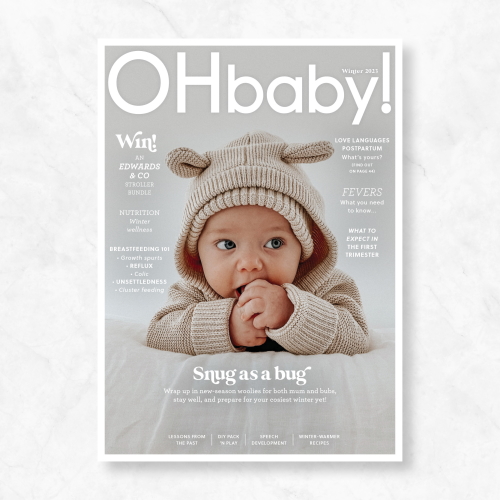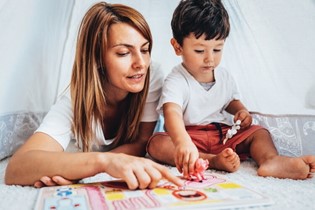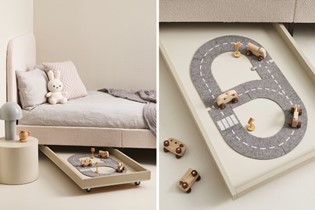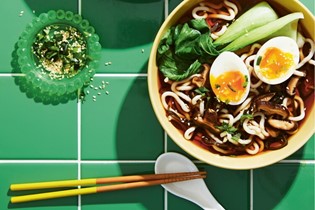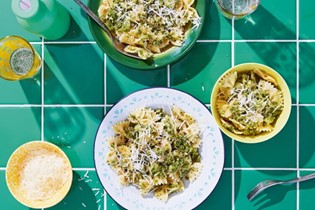What does your Love Language look like in parenthood?

Prepare yourself and your partner for what your love languages might look like in early parenthood, with postpartum doulas Jessica Prescott and Vaughne Geary from Mama Goodness.
What makes you feel loved? Is it spending quality time with your partner, or is it receiving a back rub after a long day? Do kind and encouraging words fill your cup, or would you prefer someone helped you with the laundry? Or perhaps none of this matters if you aren’t receiving gifts. It may be a combination of the above. These are your Love Languages™, a concept created by Gary Chapman in his book The 5 Love Languages®: The Secret to Love That Lasts.
Most people have one or two primary Love Languages™. When it comes to relationships, what many people don’t understand is that our partners may not have the same Love Languages™ as us. It is important to learn the ways those closest to us wish to receive love. In doing so, we have a better understanding of their needs, which enables us to remain connected and show them that we do care, even through the haze of new parenthood.
Love Languages™ are relatable to both romantic and platonic relationships, as well as those we have with our families. They are useful for showing another that you love them, as well as reconnecting in times of conflict, or when you feel adrift.


HOW IT LOOKS
Compliments, appreciation, validation, encouragement,
loving text messages and handwritten notes.
EXAMPLES FOR THE POSTPARTUM
‘You’re such an amazing mother/father.’
‘Thank you for folding the laundry.’
‘I know this is hard and you’re doing a great job.’
‘I’m so proud of you.’
OBSTACLES
Criticism, forgetting to validate the enormous transition they’ve
been through, being so consumed by your own exhaustion and endless
‘to-do’ list that you forget to communicate your love and appreciation.

HOW IT LOOKS
Uninterrupted one-on-one time, deep and meaningful conversation,
being in one another’s presence.
EXAMPLES FOR THE POSTPARTUM
Sitting with your partner while they feed your baby, date nights,
watching your favourite show together, going for a walk together,
calling to check in throughout the day.
OBSTACLES
Work, baby and household chores getting in the way of connection,
being on your phone while your partner is trying to talk to you,
feeling like ships in the night as you tend to multiple children.

HOW IT LOOKS
Thoughtful gifts on special occasions and ‘just because’.
EXAMPLES FOR THE POSTPARTUM
A ‘push present’, bringing home lunch or their favourite treat,
ordering flowers or a ‘self-care’ gift online and having it delivered.
OBSTACLES
Thinking gifts need to be lavish to be appreciated,
being so tired you forget to organise a big or little gift,
focusing on gifts for baby and not for partners.

HOW IT LOOKS
Helping with baby care and housework, doing things for your partner
that you know they will appreciate.
EXAMPLES FOR THE POSTPARTUM
Folding the laundry, taking care of nappy changes,
cooking dinner, taking the baby or older kids so parent/s can rest,
running a bath for the nursing parent.
OBSTACLES
Ignoring or forgetting requests for help, being too tired,
not asking how you can help, allowing one parent to take on
more responsibilities than the other.

HOW IT LOOKS
Hugs, massage, hand holding, gentle, non-sexual touch,
sexual intimacy.
EXAMPLES FOR THE POSTPARTUM
Cuddling on the couch once your baby is asleep.
Offering them a foot or back-rub, giving affection enthusiastically.
Kissing your partner on the head as you walk past them feeding on the couch.
Lightly touching their arm while talking.
OBSTACLES
Feeling touched out, physical healing after birth,
physical demands of parenthood, low libido.
This is an edited extract from Life After Birth by Jessica Prescott and Vaughne Geary.
Photographer: Jessica Prescott.


AS FEATURED IN ISSUE 62 OF OHbaby! MAGAZINE. CHECK OUT OTHER ARTICLES IN THIS ISSUE BELOW
